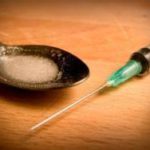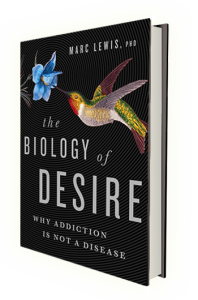If you read my blog you know that I try to post smooth, polished pieces. I try to produce something coherent, even conclusive. This one’s different: a bunch of notes that I recently found in a forgotten file from five years ago. The notes pose questions that intrigue and trouble me as much now as they did back then. I don’t even remember writing this stuff. Probably much of it landed in previous posts and articles. But anyway, here are the questions. Still without clear answers.
I’ve annotated the text and filled in a few spots that would be completely incomprehensible otherwise. I’ve also added tips to more recent work and inserted several links. But the text I started with remains relevant, at least to me. Things don’t change very fast, and I think these are hard questions.
……………
 My drug use began with psychedelics. Then came heroin. They’ve always seemed like diametrical opposites. This is where I get my intuitive feel for
My drug use began with psychedelics. Then came heroin. They’ve always seemed like diametrical opposites. This is where I get my intuitive feel for  whether drugs are good or bad. Psychedelics open you up, heroin shuts you down. But I dropped acid roughly 300 times in my late teens and early twenties. I shot heroin about 30-40 times. Why do l assume that heroin is addictive and LSD is pure sunshine?
whether drugs are good or bad. Psychedelics open you up, heroin shuts you down. But I dropped acid roughly 300 times in my late teens and early twenties. I shot heroin about 30-40 times. Why do l assume that heroin is addictive and LSD is pure sunshine?
The one wedge nearly everyone agrees on is whether a drug is addictive or not. If only it were that simple. Is addictiveness really a feature of the drug? Or a feature of the person and the social surround (Rat Park)? When you take the addict as the unit of analysis, you place him in a cage, and then analyze his interaction with this or that drug. How stupid. How is it that scientists and doctors have become the priests of such stark distinctions?
The boiled-down argument re drugs and addiction: think about Percy Menzies [see his guest-post here] and the idea of chemical hooks (in Percy’s view, the only real cure for heroin addiction is OST, opiate substitution therapy, and he especially likes naltrexone: kill the good feeling and they’ll stop). [The idea of opiates as chemical hooks is also pitched in Dreamland, by Sam Quinones.] Then along comes Carl Hart (High Price) who says “addiction” is just a label used to badmouth drugs, and our only responsibility is to educate drug users. [In his new book, Drug Use for Grown-ups, Hart argues that all drugs, including heroin, can be taken recreationally, and it’s repressive for governments to ban any drug for personal use by normal, sane adults.] And along comes Johann Hari (Chasing the Scream), who says that the opposite of addiction isn’t sobriety, it’s human connection. All very liberating. But what about addiction?
Addictive drugs: are they neurochemically distinct? Do addictive drugs mimic natural neuromodulation (opioids, dopamine, etc)….vs nonaddictive drugs (like LSD, psilocybin?) that effect perspective  change? [But let me add this: last year I went to a neuroscience conference and learned that baby zebrafish will swim toward water laced with Vicodan, an opiate painkiller. I doubt they’d swim toward an LSD solution.] Mind-altering vs. mood-enhancing. Is that what decides? (Though SSRIs are mood-enhancing…and guess what, they’re addictive…sort of.) But behavioural addictions are just as serious, aren’t they? (Gambling addicts can destroy their lives as effectively as any crack-head) Can behaviour also be divided into mood-enhancing vs mind-altering? Probably not. Maybe there are just good and bad addictions…in life, love, and drugs. Oh, and in products. Where do we stop?
change? [But let me add this: last year I went to a neuroscience conference and learned that baby zebrafish will swim toward water laced with Vicodan, an opiate painkiller. I doubt they’d swim toward an LSD solution.] Mind-altering vs. mood-enhancing. Is that what decides? (Though SSRIs are mood-enhancing…and guess what, they’re addictive…sort of.) But behavioural addictions are just as serious, aren’t they? (Gambling addicts can destroy their lives as effectively as any crack-head) Can behaviour also be divided into mood-enhancing vs mind-altering? Probably not. Maybe there are just good and bad addictions…in life, love, and drugs. Oh, and in products. Where do we stop?
 Why do we value control so much? Is control the wedge? Or is harm the crucial marker? Control vs harm and the history of antipsychotics…that increase control and kill the soul. Drugs that harm: don’t they require harm reduction? Or is it happiness, well-being, that’s key? Then why prescribe SSRIs when you could prescribe opiates for emotional pain? If you value control, then get this: drugs are a way to control our thoughts and feelings. Yet self-medication often leads to self-harm. How do we weigh the goodness of drugs when control, well-being, creativity, awareness and harm are all simultaneously changing variables?
Why do we value control so much? Is control the wedge? Or is harm the crucial marker? Control vs harm and the history of antipsychotics…that increase control and kill the soul. Drugs that harm: don’t they require harm reduction? Or is it happiness, well-being, that’s key? Then why prescribe SSRIs when you could prescribe opiates for emotional pain? If you value control, then get this: drugs are a way to control our thoughts and feelings. Yet self-medication often leads to self-harm. How do we weigh the goodness of drugs when control, well-being, creativity, awareness and harm are all simultaneously changing variables?
Drugs and therapeutics…. Psilocybin vs. depression and anxiety. If that’s okay, why not prescribe opiates for those who crave them? The duplicity built into psychiatry: we want what’s best for you. Oh really?
Patches to move us from moralism to relativism:
Individual differences — genetics are the simplest exemplar, but different life experiences matter hugely. Trauma leads to drug-use, not the reverse. Yet, the research shows that kids who never try drugs do worse than kids who do. How do we explain that?
Developmental differences — the wrong drug at the wrong age might become the right drug at the right age.
 Societal differences — my undergrads at Nijmegen [a rural region of the Netherlands] still see addicts as a different species; in Amsterdam students don’t see it like that. Let’s send Mr Hazelden to an ayahuasca ceremony and see how/whether he evolves.
Societal differences — my undergrads at Nijmegen [a rural region of the Netherlands] still see addicts as a different species; in Amsterdam students don’t see it like that. Let’s send Mr Hazelden to an ayahuasca ceremony and see how/whether he evolves.
…………………………
A sort of summary:
 Why would anyone put ayahuasca in the same category as heroin…isn’t there something intrinsically valuable about perspective change, for its own sake? And what’s the difference
Why would anyone put ayahuasca in the same category as heroin…isn’t there something intrinsically valuable about perspective change, for its own sake? And what’s the difference  between methadone and SSRIs when it comes to allaying depression (yet one is for disgusting addicts and the other is for normal healthy people, like Aunt Mary). But I so disagree with Carl Hart when he says that when your teenage kid wants to try meth your only duty (and your only right) is to educate him/her about safety issues. Are the distinctions between good and bad drugs in the drugs themselves (as we often think reflexively) or in the relation between the drug and the user? We have to really get individual differences. And developmental differences. Binge drinking at 16, not so good…social drinking at age
between methadone and SSRIs when it comes to allaying depression (yet one is for disgusting addicts and the other is for normal healthy people, like Aunt Mary). But I so disagree with Carl Hart when he says that when your teenage kid wants to try meth your only duty (and your only right) is to educate him/her about safety issues. Are the distinctions between good and bad drugs in the drugs themselves (as we often think reflexively) or in the relation between the drug and the user? We have to really get individual differences. And developmental differences. Binge drinking at 16, not so good…social drinking at age  28 can really help people connect. And what I learned from [my good friend and courageous colleague] Shaun Shelly: Isabel and I often reflect on his description of the unemployable/sidelined teens in Capetown smoking (not shooting) heroin…for social cohesion and a little pleasure. So, put it all together: look at the relationship between the person (of a certain age) and the drug, in the context of the social group and the society at large.
28 can really help people connect. And what I learned from [my good friend and courageous colleague] Shaun Shelly: Isabel and I often reflect on his description of the unemployable/sidelined teens in Capetown smoking (not shooting) heroin…for social cohesion and a little pleasure. So, put it all together: look at the relationship between the person (of a certain age) and the drug, in the context of the social group and the society at large.
Coda: What makes drugs bad? Is there something simple and primitive like the idea of being too attracted?
Conclusion: I don’t know.
………………………
A number of you posted very helpful comments about what you’d like to see in future posts. We’re working on it. Next, Eric Nada, a past contributor to the blog, will post a piece on psychedelic therapy for addiction. Given the above, I’m aware of possible ironies.
 Informed by unparalleled neuroscientific insight and written with his usual flare, Marc Lewis’s The Biology of Desire effectively refutes the medical view of addiction as a brain disease. A bracing and informative corrective to the muddle that now characterizes public and professional discourse on this topic.” —Gabor Maté, M.D., author of In The Realm of Hungry Ghosts: Close Encounters With Addiction
Informed by unparalleled neuroscientific insight and written with his usual flare, Marc Lewis’s The Biology of Desire effectively refutes the medical view of addiction as a brain disease. A bracing and informative corrective to the muddle that now characterizes public and professional discourse on this topic.” —Gabor Maté, M.D., author of In The Realm of Hungry Ghosts: Close Encounters With Addiction
Thank you, Marc. I enjoy the note-style thoughts. It’s not just one avenue to think about, but a highway that may have different connections in areas that are unexpected.
Something that I have been working on, if you don’t mind me sharing, is the progression of addiction. Based on my experience, and research, I feel the following applies to most if not all people I have spoken or worked with.
I don’t believe it’s the drugs that are ‘good or bad’, but the emotional state of the individual, in their individual environment at the time, within society at large.
IT BEGINS WITH CHOICE
At this point, you find something that alters your emotions – either the removal of unpleasant, or the reinforcement of positive. You choose to use, but it gives you an alteration of emotions that is unexpected (in the best way possible).
Which leads to …
IMPULSION
Due to the alteration of emotions, you are motivated to use again. This motivation promotes the development of impulsive use (expectation of immediate relief with little consideration to potential long-term consequences).
Which leads to …
HABIT
Impulsivity turns into compulsion (triggers that go off automatically in the presence of, or in anticipation to, drug or behaviour-related cues).
Repeated consumption provokes changes in the brain systems, including craving.
Which leads to …
‘DIS-EASE’
Persistent influence on stress takes place and the drug-seeking behaviour increases in an attempt to rebalance the body’s homeostasis.
Dependence develops. The degree of dependence can be equated with the amount of negative affect, which ranges from mild discomfort to extreme distress, or it may be equated with the amount of difficulty or effort required to do without the drug, behaviour, etc.
Which leads to…
BRAIN DYSFUNCTION
Deterioration of brain circuitry which affects your motivational, emotional, and decision-making ability. Motivation and mood prioritizes the drug or behaviour.
The ability to imagine future emotional events is related to the functioning of the medial orbitofrontal cortex, one of the most affected regions by addiction.
Once the addictive process is established, many brain functions oriented to drug seeking and taking operate in a manner without full conscious control.
IMPORTANT NOTE:
The presence of trauma and/or pain, depending on the individual,
greatly intensifies and accelerates this process.
Appreciate you taking the time to read it. I would just love to know how wrong and far off I am.
Hi Mark. I don’t think you’re very wrong at all. I agree completely with your first three stages. In fact the progression from impulse to compulsion/habit seems to correlate with a partial shift from ventral to dorsal activity in the striatum — looks pretty clear, and it happens over time. See Everitt and Robbins, 2013 and 2016. What you say about “dis-ease” seems accurate too, though I’m reluctant to use this terminology. This is what George Koob calls the “antireward system” or “the dark side of addiction.” But he’s firmly in the brain disease camp, so…he and I don’t see eye to eye. It’s important, as you suggest, to recognize that drug use may start out as a response to trauma but it often become a powerful source of trauma in itself.
As to your last stage and your “brain dysfunction” label, I’d put it slightly differently. Yes, the orbitofrontal cortex has become configured to distinguish drug from non-drug stimuli. So this becomes a frame which is imposed on all incoming events, and it has a powerful emotional thrust to it. But the job of this network is indeed to categorize complex inputs into simple distinctions and to attach emotional values to those distinctions. It’s supposed to be highly involved when infants start to distinguish smiling/friendly faces from nonsmiling/nonfriendly faces. So who’s to say that this system becomes dysfunctional? Why not just say it becomes highly attuned to what is now most relevant?
Marc, an enlightening wander through the quandaries of this issue and your rich thoughts about it, grounded in years of experience, research, and analysis. Thanks for sharing “unfinished business.” It will stimulate all of our thinking and maybe move us forward.
Wow! Have you been accessing my thinking? Talk about great minds thinking alike. All of those questions are constantly drifting through my mind and I always come to the very same conclusion, “I don’t know.”
I read, with a very critical interest, Carl Hart’s piece in the Guardian last week. I did read his last book but I certainly won’t be spending my hard earned on his latest. Surprise, surprise, socially, economically, spiritually, emotionally and psychologically self-actualised professor can use heroin recreationally!? Well hot dicky dawg!
We have talked about it so many times the problem is not the substances we use, or the destructive behaviours we adopt, its in the archaic legislation, stigmatisation, cultural condemnation and lack of authentic information where the problem lies. We have all, to some extent or another, swallowed the idea of addiction being “a chronic relapsing condition (disease). It is manifested by continued use of a substance/s or behaviours despite negative harmful consequences. It features tolerance where increasing amounts are needed, to achieve the desired effect, and cravings when the substance or behaviour is absent.” It is almost always sold as a very negative and unacceptable thing needing some kind of resolution/cure. Almost every book, film, play, poem and/or piece of music buys in to the same message.
Thankfully, these days and thanks to people like your good self, I have grown to see “addiction” as something very different. It’s part of our evolutionary psychological make up. It has always served some kind of higher purpose and is probably part of our intrinsic survival mechanisms. It’s simply people doing the best they can, at any particular time, with what they’ve got. The vast majority of people leave it behind as their lives change or they grow up. A very small minority of people get a bit too over involved and may need some help with it. There’s an awful lot of money being made by people involved in legislation, enforcement, criminal justice, the treatment industry, advertising, medicine, big pharma, big gambling, big brewers, and big food industries.
My belief is that we need to start by decriminalising all drugs and making them much more easily available and safe. Why shouldn’t we be able to sit around with friends and a couple of Shaman and share the mind expanding experiences of psychedelics? Why do we always have to ingest really neurotoxic chemicals in our pursuit of happiness and self soothing, when we have a whole plethora of well tested natural chemicals readily available to us? I believe that opioids, cannabis, MDMA, etc. can be the very best antipsychotics and antidepressants but, because of the war on drugs and archaic drug laws, I doubt we will ever get to legally use them in that way. I also believe that when you have had enough, and for whatever reason, can’t find any hope or relief from suffering, you should be able to seek help from a kind compassionate clinician to take that last opioid ride into the great beyond.
I agree we need to legalize drugs ..a drugs is a drug… who says one is bad or good?
I’m reading Robert Whitaker Psychiatry Under the influence …wow makes me feel betrayed by the “treatment field”. Even though I always secretly resented psychiatrists “all knowing status” with the final word in “treatment teams” when they often never even met the client! No listening to the client there!
Psychiatry’ was build on guilded interests and big pharma.
There’s no difference between psychiatry and drug dealers…except drug dealers are stigmatized as “morally bad” … so ridiculous…
Plus I’m seeing some scary results in NY from the street heroin( well fentanyl )
Psychosis and unusual behaviors, not typical of opiates…
We need regulation!!! Alcohol was legalized because dummies who didn’t understand science were making poisonous alcohol….history is repeating itself. …
Hi Marc,
another very interesting post, even in unpolished form! With regards to addictiveness, I am surprised and fascinated to read that some pretty basic questions remain unanswered.
In my, no doubt simplistic, model – and please, tell me where I am wrong – there are drugs that directly interfere with the motivational system by causing artificial spikes in dopamine, the transmitter on which the motivational system most relies. And these are the drugs – opiates, nicotine, cocaine, etc – that people sometimes call “physically” addictive.
And then there are hallucinogens, SSRIs, barbiturates, cannabis, MDMA and all the rest of them, that don’t have a major direct effect on dopamine levels and whose action has more to do with serotonin and other transmitters. These are the drugs people sometimes describe as only “psychologically” addictive.
Obviously, if you value and indulge in an activity enough – and therefore produce your own dopamine rewards in response to it – you can get addicted to all sorts of things. Especially things that are designed to be super-stimulating: sex, gambling, scrolling through social media feeds, etc. These are behavioural addictions. In my model, an addiction to SSRIs or smoking weed or taking acid is essentially another one of these behavioural addictions to something super-stimulating.
As you have written so well about elsewhere, each drug and each individual’s addiction has its own unique profile of risks and rewards, social stigmas, cultural meanings, withdrawal symptoms and dependencies, and so on and so on. And in this way, no doubt a behavioural addiction such as gambling can be just as devastating as a “physical” addiction such as smoking. But I think that probably has more to do with the relative pros and cons of indulging in each one, rather than their relative addictiveness.
And even if a “psychological” dependence can be just as ruinous as a “physical”one, I still think the physical vs psychological distinction is a useful one to maintain. I haven’t read Dr Hart’s new book, but I agree that it isn’t, on balance, helpful, wise or morally right for governments or society to try and suppress drugs. if I were a parent, though, I would find out which are the drugs that directly affect dopamine levels and advise my children to treat those ones with extreme caution, and ideally avoid them altogether. (Perhaps I might even point out that would still leave them acid, MDMA, mushrooms, DMT and lots of other things to experiment with, in the hope that the higher up the list of things to try they put those fun drugs, the lower down the list they would put heroin, nicotine and crack.)
“…why not prescribe opiates for those who crave them?” I was struggling with what my doctor thought were panic attacks and was prescribed anti-anxiety meds that knocked me out and I couldn’t take them. I suggested she prescribe Vicoden as I knew these would relax me and I am highly functioning on them. She laughed. I laughed. I’d be an opiate addict in a flash – A FLASH – if these were still prescribed on a whim. Alas, I have stuck with alcohol and am still battling that one.
some would rather their child use Ice instead of alcohol or tobacco – the 2 biggest killers as far as drugs go; closely followed by medically used morphine in its various forms – because in (most) cases humans will try drugs, as you say initially for social reasons connected to being accepted into peer groups and a right of passage to adulthood. Just say no campaigns have been disproved as effective and in fact may contribute to harm. Just say Know is a mantra of Harm Reducation and it is what Hart alludes to. what is not realized or is easily forgotten is the Set and Setting aspect of the drug relationship. The attachment and trauma issues and the societal issues related to mainly disenfranchised populations groups. it is these people primarily who are most harmed by drugs but they are between a rock and a hard place – the drug makes their life bearable, but can then itself destroy that life. What a predicament. We freely use and give out prescription drugs by the trillions everyday but that is rarely questioned. Doctors and Chemist shops (so named in Australia) are the legal drug pushers of society. In any newly made town one might need a Public house to sell alcohol and a Chemist shop as basic ingredients. Humans love drugs. Why fight it. we may be far better off going with the flow than against it – this is what drug law reforms seeks to do – at least that’s reality.
David Courtwright a scholar on the history of addiction makes a profound observation in his recent book: The Age of Addiction – How Bad Habits Become Big Business. Here is a quote from the inside of the book jacket: ” The Age of Addiction chronicles the triumph of what Courtwright calls “limbic capitalism”, the growing network of competitive businesses targeting the brain pathways responsible for feeling, motivation and long-term memory. I highly recommend this book.
The limbic capitalists have a frontier mentality of coming up with more potent and broader range of products, devices, foods etc, and turning each into big business through sophisticated marketing all designed to first create pleasurable habits which can lead to addiction. A small percentage of people will need help to overcome the addictions.
People seeking help/treatment encounter another capitalist group I call “Treatment Capitalists”. Treatment capitalism operates on a fortress mentality with little interest in learning about newer medications, therapies, preventative measures to help patients regain normalcy as is the case with many other illnesses. The treatment field is firmly grounded in the ‘incurable disease’ model giving patients little hope of getting ‘well’. The treatment capitalists see no reason to change the present ‘treatment’ model which is incredibly lucrative. Look at the tens of millions of dollars being invested by venture capital firms in buying up residential treatment programs and methadone clinics!
The limbic capitalists and treatment capitalists are moving in opposite directions and the patients are the victims. The CDC recently published opioid overdose deaths during the pandemic
https://www.cdc.gov/media/releases/2020/p1218-overdose-deaths-covid-19.html and how has the treatment field reacted to this alarming figure? Not in a very reassuring way, I might say! The opioid addiction should have been treated as a public health emergency with increased funding, removing many of the restrictions on medications like buprenorphine and methadone (some of these have been suspended due to the Covid-19 emergency) but we have not seen significant changes to increased access to treatment. We have set the bar so low – the goal we are often reminded is keeping patients alive. Harm reduction has become the new ‘treatment’ instead of being an intermediary step towards long term recovery.
I am a strong proponent of drug decriminalization and a strong believer in ‘criminalizing’ bad treatment! I have talked about this in some of my posts. How else can you explain that less than 10% of the 23 million patients impacted by drugs or alcohol receive treatment!
Addictive drugs, foods, devices and behaviors are here to stay and more and more people are going to be impacted. We have to develop newer treatments and bold preventative measures to help patients seeking help. It is time Treatment Capitalists take on a frontier mentality – there is a lot of potential to make healthy profits from getting more patients into treatment and getting them well.
Hi Percy. This is a very astute and comprehensive summary of the present situation. I agree with everything you’re saying. The “limbic capitalists” are precisely who I was referring to in the the link in my post, under the words “in products.” Here it is again: https://www.nirandfar.com/hooked/ The author of this and a previous book is Nir Eyal. I once talked with him — actually over several conversations. He was picking my brain about addictive processes (pun intended). At the time I thought he was learning all he could about making products more addictive for the purpose of helping protect people from this insidious trend in marketing. More recently, and partly through Isabel (my wife) who interviewed Eyal a month ago, I’ve realized that he’s more interested in selling these strategies to advertisers and marketers…and whoever else…to enhance their “enabling”
skills. In fact the blurb on the book webpage says “A must read for everyone who cares about driving customer engagement.” That seems pretty clear.
Shocking and very disappointing.
I like the way you model the reciprocity between “limbic capitalism” and “treatment capitalists”. There is wisdom in that. Of course the limbic capitalists in this case are the (usually illicit) drug manufacturers and distributors. It is they who feed the “treatment capitalists” their clients. I think most of the readers of this blog know that much of the residential treatment enterprise is a sham. Apparently “Cliffside Malibu” is now charging $150k/month. Is that even possible? I know that the $50-100k/month range is not uncommon.
My brilliant cousin Karen Minden, who posted a comment above, alerted to me to a fascinating trap-door in how rehabs and treatment centres promote themselves. They’re all using the phrase “evidence-based” when they describe their methods. Karen pointed out that a certain form of therapy (e.g., CBT) might well be evidence-based…meaning that it works in particular contexts with a particular client population. This does NOT mean that it works for people with addictions in any sort of residential rehab. What they should be reporting is outcome evaluations. And they just don’t! Because, obviously, their outcomes are generally crap. As I think you probably know, residential rehab frequently does more harm than good. Suicide and OD rates tend to go up rather than down (after discharge) if I’m not mistaken…though this may not be the case for long-term/good follow-up/high-quality (rather than gourmet-brandishing) treatment centres.
The only thing that stumps me in your post is your call to arms: urging treatment capitalists to take on a frontier mentality and do…what? More good? Less harm? If what they’re peddling is standard residential treatment, they’d be the last group I’d turn to for real progress.
Re decriminalization and “disease” labelling, we seem to be in total agreement.
Hi Marc,
Thank you for the feedback. Many of the limbic capitalists are in legitimate businesses. The most sinister example is Purdue Pharma who sparked the prescription opioid epidemic by irresponsibly promoting Oxycontin, a highly addicting drug. It get’s worse. Purdue brought in one of the top consulting firms to help with marketing and fending off FDA oversight. McKinsey pleaded guilty and paid a fine of almost $600 million. Here is the link to the story from the NYT.
McKinsey Settles for Nearly $600 Million Over Role in Opioid …www.nytimes.com › business › mckinsey-opioids-settlement
Courtwright cites many other examples from McDonald’s engineered burgers to video games. The Chinese and Mexican drug dealers have become experts at brining in meth, fentanyl and cocaine. The book Fentanyl Inc. by Ben Westhoff uncovers the Chinese drug enterprise.
It will take time and pressure from the government, patient advocacy groups and treatment reformers to demand changes. The Covid-19 pandemic had a silver lining for the treatment field. SAMHSA, the US Govt agency dealing with treatment issued emergency orders mandating methadone clinics to allow patients to have 2-4 weeks of take home doses. Telemedicine services have expanded and some of the restrictions on buprenorphine have been suspended.
Why not open more outpatient treatment centers? We have to debunk the marketing myth that expensive residential treatment is more effective than outpatient treatment. It is not unusual for family members of patients to be skeptical of my outpatient treatment program. I politely tell them about smoking cessation programs. Smoking is a very addicting habit, yet patients don’t go to California and Arizona to quit smoking. We can do the same for alcohol and drugs in outpatient treatment.
We have over 1500 methadone clinics that primarily offer methadone. Many of these clinics can be transformed into comprehensive medical clinics treating opioids, alcohol and other drugs and remain open all day like other medical clinics treating a variety of illnesses. Venture capital investors should be able to see the potential for expanded services.
There are way too many silo’s within the treatment field impeding treatment. Utilizing medications is not going to threaten the survival of the clinics. Indeed, the improved outcomes will bring more patients into treatment. The hostility towards medications like naltrexone has to end, Offering patients treatment choices is smart thing to do.
We have people like Carl Hart, Johann Hari who have become the darling of the media for advocating drug legalization, safe injections etc describing such policies as healthy and humane.
I am pleasantly surprised at the number of clinics following the ARCA model and the invitations we receive to speak at conferences. Our mantra – harm reduction is necessary but insufficient. It should lead to harm elimination and harm avoidance.
I am not giving up. We are now the largest clinic in Missouri providing medical and psychiatric services to about 2400 active patients with addictive disorders.
Percy, I really like your emphasis on informing the public that outpatient treatment is as effective or far more effective than residential treatment (despite the absence of gourmet meals 😉 Smoking cessation — great example. And the importance of attracting venture capitalists as a next step…good thinking, good policy. Bravo!
Just a few questions, mostly re details:
When you say “We have over 1500 methadone clinics…,” who is “we”?
Yes, offering choices is “the smart thing to do”….so why do you always narrow this point so that it seems to bear only on naltrexone, as if that’s the only useful medication? In fact why not extend your advocacy of legalization….right here.
When you say that Carl Hart and Johann Hari have “become the darling of the media for advocating drug legalization, etc, etc,” isn’t there a subtext there? If so, please say it out loud. Do you totally endorse their positions?
Finally, why do you refer to Oxycontin as “a highly addicting drug”? As you know, the drug is oxycodone. Oxycontin is simply a slow-release form of packaging that justifies a higher dose per tablet. Let’s keep this story clear, to help readers understand relevant distinctions.
Thanks for helping to educate us!
Hi Marc
Thank you a great and very valuable set of considerations.
Semantics aside.
Context (both internal and external) onset, duration, type, salience, attribution and quantity must in my opinion be considered in the severity of impact and entrenchment of the dependency. I certainly think my journey and relationship with things that helped me change how I felt was way more complex than just the salience and semantics I attributed to a particular ‘substance’ for me it was either something that was in or out of my reach or something that I used with little thought of why! On reflection the only truly deliberate action was the intention to ‘do it’ at whatever cost. I think as I used heroin multiple times to tens of times and then on to hundreds and eventually thousands of times to where my journey meant anything and everything went in the spoon even rewarming and trying to re-heat and re-hit congealed blood scraping it out of an old syringe gun and emptying it back in to the spoon just in case it had ‘something’ in it signalled to me that my base instinct was usurped and it certainly felt like I was hardwired to continue on a path to eventual death. I gave up many times putting up with the rattle over and over again only to return each time more deflated and less hopeful than the last. Each time I longed and I cried out to be clean yet I just couldn’t do it, that is for me the emptiest dessert on the planet and then each time the reasons and motivations for using were way different from the origins they had originally been, whatever the hell that was. The journey out this was incredibly painful inevitably filled with set backs and years and years of pain. The call to the comfort and illusion of the promise of escape that the things that change how we feel are always there and yet we know it doesn’t work, but in the midst of loneliness and isolation and when the inner demons get ramped up it’s pure torment. I know we have all experienced it and it is filled with pain. My view is there is no authentic concordance or unifying theory that will ever adequately or neatly explain all of this for all of us, because simply it’s ‘us’ and who we are that makes ‘us’ different from each other. I think though we struggle to accept this as it’s to similar in nature to our sense of powerlessness (not the AA type) our ontological insecurity our need to have adaptive reasoning defining our sense of mastery informing our sense of how we exert control over our world and when we can’t it’s terrifying. The struggle to define all things for all people and then to try to define what all these things mean in relationship to our own sense of ourselves I think can enhance our sense of insecurity and impede our ability to rest with a self defined definition of what it intimately means for us. Apologies but to borrow a simple phrase I heard in a 12 step meeting ‘take what works for you and leave the rest’ thanks again Marc
Just stopped by to say I always enjoy the blog and Marc is the MAN. I have read all your books and am reading drugs for drugs for grown-ups. Its a tad optimistic. If I cold buy coke every day I’d be living under a bridge.
If Carl Hart REALLY believes that a parent should just stand by while a kid of theirs uses meth (after some sort of “the birds and the bees” drug safety talk), then he should also logically believe that all minor children committing crimes be tried as adults.
As an African-American from the hard side of Miami, I’m sure he’d reject the latter, but I love petard-hoisting.
In addition, as a tenured psych prof, he knows the juvenile mind isn’t fully developed.
So, this is really either libertarian BS, or if he’s serious, arguably a violation of professional ethics.
what do you mean by this? drugs are drugs any way! they don’t have good or bad!